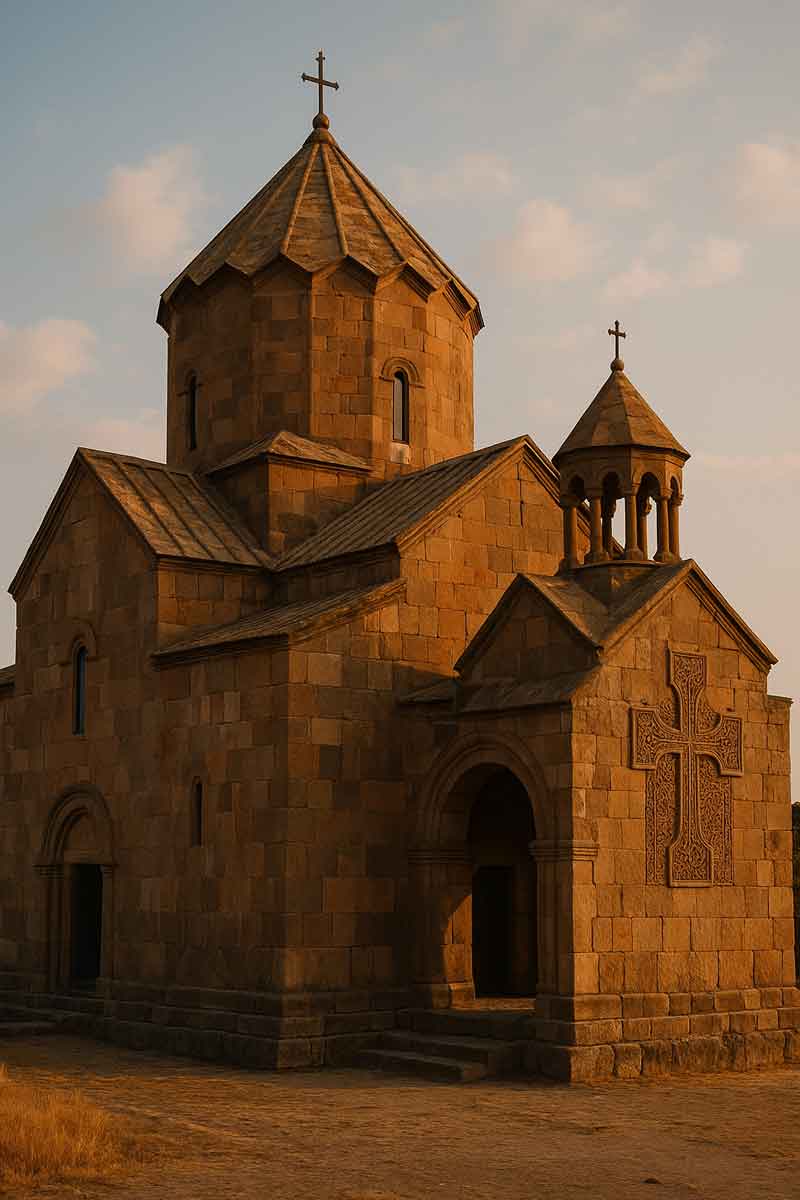TIn the vast history of Christianity, the Armenian Apostolic Church holds a uniquely honored place. Armenia became the first nation to adopt Christianity as a state religion in 301 AD, decades before the Roman Empire’s conversion. This bold decision reshaped Armenia’s spiritual and cultural life, securing the Church as both a religious institution and the guardian of national identity.
The Apostolic Foundations
The Mission of Thaddeus and Bartholomew
Tradition attributes the origins of Armenian Christianity to the apostles Thaddeus and Bartholomew. According to early accounts, they journeyed through Armenia in the first century, preaching the Gospel and planting the seeds of faith that would later flourish.
Gregory the Illuminator and the Conversion of Armenia
Centuries later, this foundation was strengthened by Gregory the Illuminator. His mission to the royal court led to the conversion of King Tiridates III and the Armenian people, making Christianity the state religion. Gregory’s leadership shaped not only Armenian worship but also the very identity of the nation.
Distinctive Traditions Within Global Christianity
Eastern Orthodox, Roman Catholic, and Protestant Developments
Christianity took many paths across the world. The Eastern Orthodox Churches, with their Byzantine liturgy and iconography, emphasized mystery and beauty. Roman Catholicism, centered in Rome, became defined by monumental cathedrals and theological traditions. Protestant reform movements later focused on Scripture and personal faith.
The Armenian Apostolic Church Among the Oriental Orthodox
The Armenian Church developed alongside the Coptic, Syriac, and Ethiopian Churches as part of the Oriental Orthodox family. These traditions preserved ancient liturgical forms and offered distinctive expressions of theology and worship, setting them apart from both Rome and Byzantium while maintaining deep ties to the Christian world.
Sacred Symbols and Expressions of Faith
One of the most enduring symbols of Armenian Christianity is the Armenian Cross. Unlike the crucifix of the Catholic West or the flared designs of Byzantine crosses, the Armenian Cross is often carved into khachkars — elaborately decorated cross-stones unique to Armenia. These masterpieces combine faith with artistry, embodying resurrection, life, and the enduring spirit of a people who held their faith through centuries of struggle.
Khachkars are not only monuments of devotion but also cultural landmarks, scattered across Armenia and preserved by diaspora communities. They testify to a religious tradition where art and faith remain inseparably intertwined.
The Church as Guardian of Armenian Identity
Preserving Language, Manuscripts, and Schools
The Armenian Church became more than a spiritual institution — it was the protector of national culture. During centuries of foreign domination, the Church preserved the Armenian language, safeguarded manuscripts, and maintained schools, ensuring that heritage survived through turbulent times.
Mesrop Mashtots and the Armenian Alphabet
The creation of the Armenian alphabet in 405 AD by Mesrop Mashtots, under the patronage of the Church, was one of the greatest cultural achievements of the era. Translating the Bible into Armenian allowed the faith to be practiced in the people’s own tongue and ignited a literary tradition that continues to this day.
Dialogue and Exchange With the Wider World
Relations with Byzantium and Rome
The Armenian Church often stood at the crossroads between East and West. It shared deep liturgical connections with Byzantium and engaged in theological dialogue with Rome. These interactions enriched its traditions while reinforcing its independence.
Encounters with Protestant Missions and Modern Christianity
In the modern period, the Armenian Church also encountered Protestant missionaries, balancing dialogue with its firm Orthodox identity. This spirit of engagement, without losing its roots, reflects Armenia’s role as a cultural bridge across civilizations.
Enduring Legacy in Faith and Culture
Armenian Monasteries and Global Diaspora Churches
From the medieval monasteries of Lake Sevan and Etchmiadzin to diaspora churches in Los Angeles, Paris, and Beirut, the Armenian Apostolic Church continues to anchor spiritual life for millions. Its liturgy, unchanged for centuries, ties the faithful to their ancestors.
The Church as a Cultural and Spiritual Anchor
The Armenian Church has endured as both a cultural and spiritual stronghold. It preserved memory through the darkest times, including the Armenian Genocide, and remains a symbol of continuity for Armenians worldwide.
Conclusion
The Armenian Apostolic Church stands as both uniquely Armenian and universally Christian. Its apostolic roots, sacred traditions, and cultural achievements show how faith can shape national identity and endure through history. By preserving its distinct heritage while engaging with the wider Christian world, the Armenian Church continues to testify to the resilience of a people whose faith became their lasting legacy.

